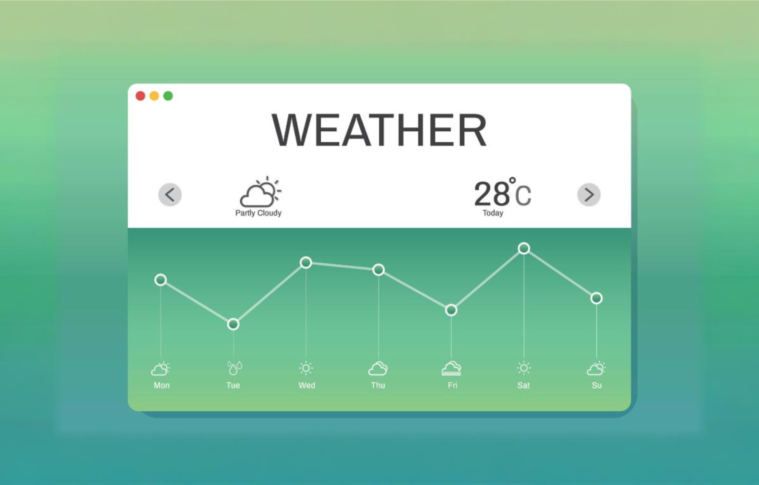As climate change accelerates, monitoring environmental changes and assessing their impacts is essential for informed decision-making and effective mitigation strategies. Various technologies are being employed to monitor climate change, providing real-time data and predictive insights. This case study explores the key technologies used to monitor climate change and their real-world applications, from satellite-based systems to ground sensors and data analytics.
Background
Climate change monitoring is critical for understanding trends in temperature, weather patterns, sea levels, and ecosystems. With climate-related disasters becoming more frequent, accurate and timely data is essential for governments, businesses, and communities to prepare and take action. Advances in technology have made it possible to gather, process, and analyze environmental data with unprecedented precision and efficiency.
Key Technologies Used to Monitor Climate Change
1. Satellite Remote Sensing
- What It Is: Satellites equipped with advanced sensors capture data about the Earth’s atmosphere, oceans, and land surfaces. This technology provides large-scale, long-term observations of climate indicators, such as temperature, vegetation, and ice cover.
- Example: NASA’s Earth Observing System Data and Information System (EOSDIS) is a comprehensive satellite-based system that monitors various environmental factors, such as global temperatures, sea levels, and atmospheric gases.
- Impact: Satellites allow for real-time global climate monitoring, providing essential data to track changes in ecosystems, deforestation, ice melt, and atmospheric CO₂ levels. This data is vital for understanding climate trends and predicting future changes.
2. Ground-Based Climate Sensors
- What It Is: Ground-based sensors are installed in various locations to monitor specific climate parameters, such as temperature, humidity, soil moisture, and air quality. These sensors collect data that complements satellite observations, providing more localized insights.
- Example: The European Space Agency (ESA) operates the Copernicus program, which includes ground-based sensors in weather stations across Europe to measure air pollution levels and greenhouse gas emissions.
- Impact: Ground-based sensors provide more detailed, localized data that can inform policies and decisions for climate adaptation. These sensors also help detect immediate environmental changes, such as heatwaves or sudden shifts in local ecosystems.
3. Climate Modeling and Simulation Software
- What It Is: Climate models use mathematical algorithms and computer simulations to predict future climate scenarios based on historical data and current emissions. These models simulate temperature, precipitation, and extreme weather patterns to forecast long-term climate impacts.
- Example: The Community Earth System Model (CESM), developed by the National Center for Atmospheric Research (NCAR), is a widely used tool to simulate and predict changes in the Earth’s climate system.
- Impact: Climate models help predict future scenarios, including sea level rise, extreme weather events, and temperature changes. These predictions allow governments and organizations to prepare for and mitigate potential risks.
4. Internet of Things (IoT) for Climate Monitoring
- What It Is: IoT networks involve the use of interconnected sensors and devices that collect and transmit environmental data. These sensors are placed in key areas such as forests, oceans, and urban spaces to track changes in real-time.
- Example: In the Maldives, IoT sensors are deployed in coastal areas to monitor rising sea levels and track the impact of climate change on coral reefs. Additionally, smart agriculture systems use IoT to monitor soil conditions and optimize water usage, mitigating the effects of climate change on farming.
- Impact: IoT enables continuous, real-time monitoring of environmental changes, providing immediate feedback and allowing for rapid responses to climate events. It is particularly useful in monitoring vulnerable ecosystems and urban environments.
5. Drones and Unmanned Aerial Vehicles (UAVs)
- What It Is: Drones and UAVs are used to collect high-resolution imagery and data from areas that are difficult to access, such as forests, glaciers, and flood-prone regions. Equipped with sensors and cameras, they can capture data on vegetation, soil, and atmospheric conditions.
- Example: In California, drones have been used to monitor wildfires, track their progression, and assess the impact of these fires on ecosystems. UAVs are also used to monitor deforestation and ice shelf movements in the Arctic.
- Impact: Drones provide cost-effective, detailed, and up-to-date environmental data. They are invaluable for assessing remote or hazardous locations, enabling efficient disaster response and environmental monitoring.
6. Big Data and Artificial Intelligence (AI)
- What It Is: Big data analytics and AI are used to process and analyze massive amounts of environmental data from satellites, IoT sensors, and climate models. These technologies help identify patterns, predict future trends, and optimize climate policies.
- Example: Google’s DeepMind AI has been used to improve the efficiency of energy systems, reducing carbon footprints in buildings by optimizing energy usage. AI also helps process climate data to predict severe weather events and natural disasters.
- Impact: AI and big data are critical for analyzing complex datasets, enabling faster decision-making and improving climate predictions. They allow governments and organizations to optimize resources, reduce waste, and anticipate climate-related disasters.
Case in Focus: The Arctic Monitoring and Assessment Program (AMAP)
The Arctic is one of the regions most affected by climate change, with warming rates more than twice the global average. To track environmental changes in the Arctic, AMAP uses a combination of satellite imagery, ground-based sensors, and climate models to monitor key indicators such as ice melt, temperature rise, and changes in wildlife habitats.
Implementation:
- Satellite data from NASA and the European Space Agency (ESA) tracks sea ice extent and thickness.
- Ground sensors measure air temperature, snow depth, and pollutants in Arctic ecosystems.
- Climate models predict future impacts, including sea-level rise and changes in precipitation patterns.
Outcomes:
- AMAP’s data has been crucial in raising awareness about the accelerated melting of Arctic ice, which contributes to global sea-level rise.
- The program has informed policy recommendations for international cooperation on Arctic conservation and sustainable resource management.
Challenges in Climate Change Monitoring
- Data Gaps and Accuracy: While technology has advanced significantly, data gaps still exist in certain regions, particularly in remote or developing areas, making it difficult to get a full picture of global climate change.
- High Costs: The deployment of satellites, sensors, and drones requires significant financial investment, which can be a barrier for lower-income countries or small organizations.
- Integration of Data: With so many different technologies and systems in use, integrating data from diverse sources into cohesive, actionable insights remains a challenge.
- Data Privacy and Security: The increased collection of environmental and geographical data raises concerns about privacy and data security, especially in sensitive regions.
Recommendations for Effective Climate Monitoring
- Global Collaboration: Countries should collaborate to share climate data and technologies, ensuring that climate monitoring is more inclusive and accurate.
- Investment in Technology: Governments and organizations should invest in cutting-edge technologies to ensure continuous, real-time climate monitoring, especially in underdeveloped regions.
- Public Access to Data: Providing open access to climate data will allow researchers, policymakers, and the public to make informed decisions about climate action.
- Advanced Modeling: Improve climate models by incorporating AI and big data to enhance the accuracy of climate predictions and provide better guidance for policy-making.
Conclusion
Monitoring climate change is essential for understanding its impacts and mitigating future risks. Technologies such as satellite remote sensing, IoT, AI, and climate models are crucial in providing real-time data and predictive insights. As these technologies continue to evolve, they will play an even more significant role in helping the world understand, address, and adapt to the ongoing challenges of climate change. By overcoming the challenges of data integration, accuracy, and funding, digital technologies will continue to shape the future of climate change monitoring and action.



